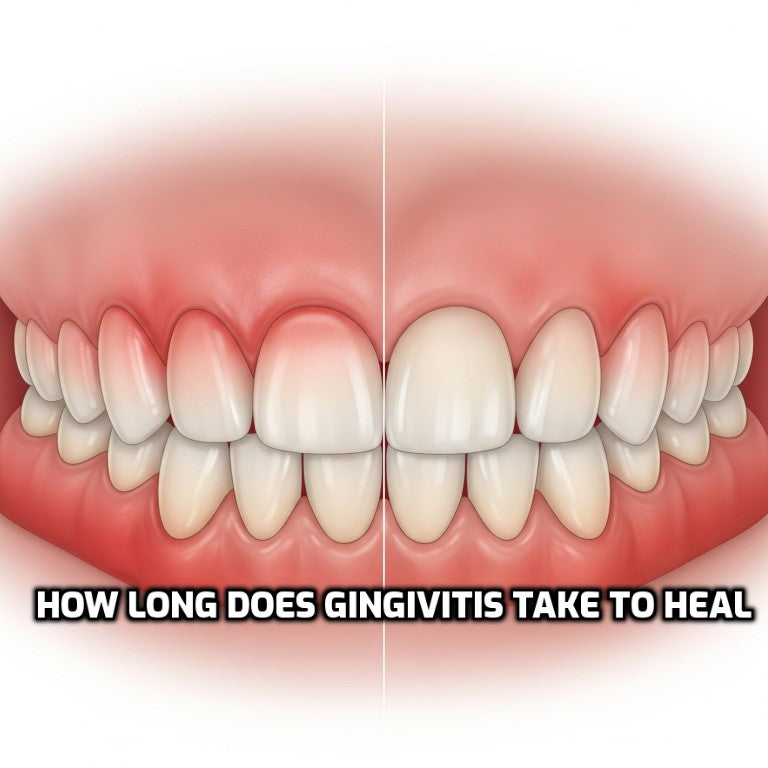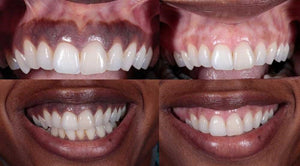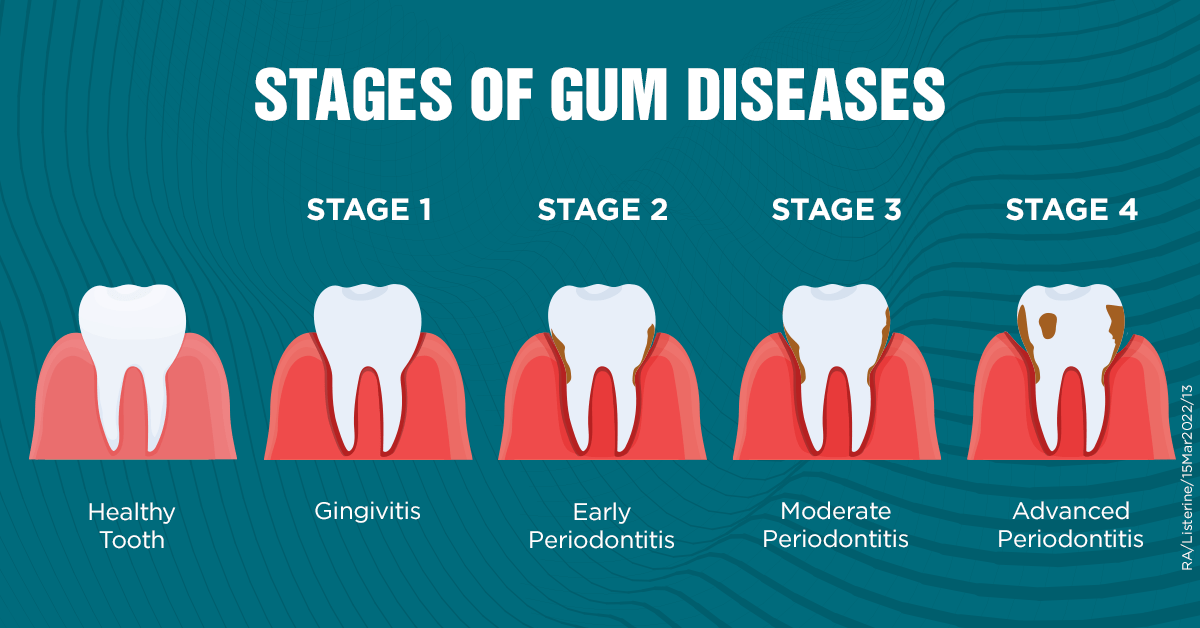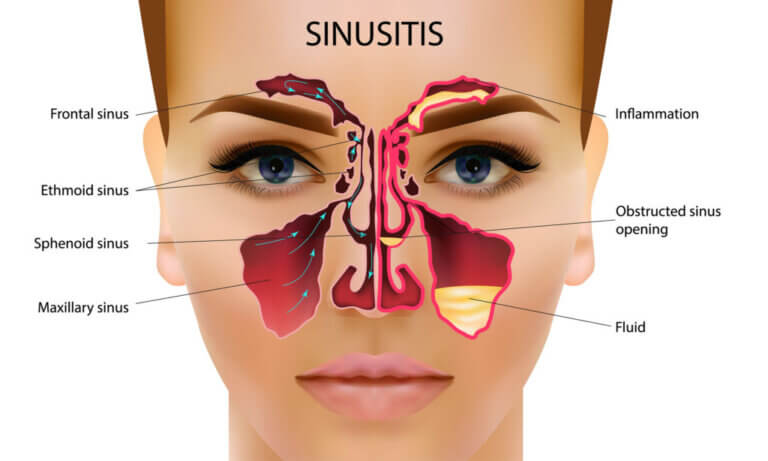Gingivitis is a common but worrying gum ailment that millions of individuals globally have to grapple with on a daily basis and this type of gum disease leads to inflammation, bleeding and tenderness of the gums. This problem arises when bacterial plaque forms along the gum line causing an immune response that causes the gums to swell, turn red and bleed.
The key offenders of this inflammatory response are the pathogenic bacteria, which include Porphyromonas gingivalis and Tannerella forsythia. These secrete toxins that stimulate the gum tissue and activate the body inflammatory process.
Getting insight on “how long does gingivitis take to heal” is crucial for anyone dealing with this frustrating condition. The duration of healing considerably differs based on the predisposition of the inflammation, the immunity reaction of the person and the method of operation embraced. Although in mild conditions, the healing can take days of better oral care, in severe cases, it can take weeks of regular treatment to form full recovery.
P.S - The lack of treatment will lead to periodontitis which is the complicated gum disease posing threat of the loss of teeth, bone destruction, and other such dangerous complications.
The good news is that this condition is totally reversible as long as proper care and treatment is provided on time and hence there is always a need to treat it early enough and effectively.
Gingivitis - An Overview
The simplest and first stage of gum disease is gingivitis, which is called inflammation of the gingiva (the portion of the gum tissue that encloses the bottom of the teeth). It is an inflammatory disease that is a result of bacterial plaque, the sticky bacterial and food particles film on the gum line that is left to become hard or even turn into tartar when you don’t brush and floss regularly.
The disease is characterized by a number of symptoms which gradually get serious unless prevented. Initially, a patient will experience light redness and swelling of gums and specifically on gum lines where deposits of plaque are likely to build up. As the inflammatory process intensifies, the gums become increasingly sensitive and may bleed during brushing, flossing, or even while eating.
The pathophysiology of gingivitis involves a complex interplay between bacterial toxins and the host immune response. When harmful bacteria colonize the gum line, they release endotoxins that penetrate the gum tissue and trigger an inflammatory cascade. This results in increased blood flow to the affected area, causing the characteristic redness and swelling associated with gingivitis.
Unlike periodontitis, gingivitis affects only the soft gum tissue and does not involve the deeper supporting structures of the teeth, including the periodontal ligament and alveolar bone. This distinction is crucial because it means gingivitis is completely reversible when treated appropriately, whereas periodontitis can cause permanent damage to the tooth-supporting structures.
How Long Does Gingivitis Take to Heal: The Recovery Timeline
The question of how long does gingivitis take to heal depends on multiple factors, but most cases follow a predictable recovery pattern when proper treatment is implemented. Generally, patients with mild gingivitis may start noticing improvement after 48 to 72 hours of instituting a good oral hygiene routine, and the healing process would be noticed in a matter of 1-2 weeks.
The treatment of moderate cases of gingivitis takes a longer period as it may take two to four weeks before complete recovery with a more intensive process and regular home treatment.

Cases of advanced gingivitis have been shown to require treatment periods of four to six weeks (or more) before healing was fully achieved, and may have needed professional dental treatment as well as the practice of strict oral care regimens every day.
Usually the first signs of recovery occur within the first week of treatment where the patients report less bleeding as they brush and floss their teeth. The redness goes away, which was caused by inflammation and the gums gradually regain their pink shade. The swelling goes away gradually and the gums become less sore to touch.
It is necessary to note that the improvement of the condition might be quite fast but cellular regeneration is a long-lasting process. The periodontal tissue has to rebuild, recover and become normal in structure and functionality. This process is characterized by elimination of inflammation, restoration of tissues and healthy roughness of the bacteria balance in the oral cavity.
Treatment repetitiveness is the key to attaining best curative periods. When a patient is committed to brush well and keep to their treatment schedule then they will recover quickly as opposed to patients with irregular oral hygiene care.
Factors That Affect Gingivitis Healing Time
Several key factors influence “how long does gingivitis take to heal”, with some being modifiable through lifestyle changes while others are inherent to the individual. Knowledge of these issues will assist the patients to have a realistic expectation and maximize the treatment process to recover faster.
Age:
Advanced age is one of the main factors that affect the healing time, whereby younger people would recover faster, given their stronger immune systems and higher levels of healing tissue. It can take the elderly more time to fully heal especially in case they have underlying health issues that reduce the effectiveness of their immune system.

Tobacco/Smoking use:
Tobacco use and smoking retard the healing processes enormously, as it stagnates blood flow to the gums and derails the immune system. Tobacco products disrupt the usual healing cascade and are capable of hiding initial improvement, so that it is hard to determine accurately the advancement of treatment.
Health Conditions:
General health problems like diabetes, autoimmune diseases, hormonal troubles have a tremendous effect on times of recovery. Diabetes especially forms a two-way connection with gum disease in that ineffective control of blood sugar hinders the process of healing and, on the other hand, inflammation of gums can exacerbate glycemic control.
Healing Power of Body:
The nutrition level of an individual would directly influence the body status of healing and resisting infection. Vitamin C, Vitamin D, and other necessary nutrients deficiency may increase the time of recovery and negatively affect the immunity to the bacteria infections.
Sleep Pattern:
The level of stress and quality of sleep is also related to healing time because of its role in immune systems and inflammations. Stress increases cortisol levels, which may inhibit the response of the immune system and slow down the healing and recovery of tissues, and sleep is necessary to stimulate the best healing and recovery.
Early Stage Gingivitis: Recovery in 1-2 Weeks
Early-stage gingivitis represents the mildest form of gum disease and typically responds rapidly to improved oral hygiene practices. At this stage, symptoms are often subtle and may include slight gum redness, minimal bleeding during brushing, and mild tenderness along the gum line.
The healing process for early gingivitis can begin within 24 to 48 hours of implementing proper oral care techniques. Patients often notice reduced bleeding during the first few days of consistent brushing and flossing, followed by gradual improvement in gum color and texture over the following weeks.
Professional dental cleaning may not be necessary for early-stage gingivitis if patients can establish effective plaque control through home care. However, proper technique is crucial, and patients should focus on gentle yet thorough cleaning along the gum line where plaque tends to accumulate.
Natural remedies can be particularly effective at this stage, with anti-inflammatory compounds helping to reduce gum inflammation and promote healing. Omega-3 and omega-9 fatty acids possess powerful anti-inflammatory properties that can significantly accelerate the healing process when incorporated into daily oral care routines.
The key to success in treating early gingivitis lies in consistency and proper technique. Patients should brush at least twice daily with fluoride toothpaste, floss daily, and consider using antimicrobial mouth rinses to reduce bacterial load in the oral cavity.
Moderate Gingivitis: Healing Timeline of 2-4 Weeks
Moderate gingivitis presents with more pronounced symptoms and typically requires professional intervention combined with intensive home care for optimal healing. At this stage, patients experience noticeable gum swelling, regular bleeding during oral hygiene activities, and increased sensitivity to temperature changes.
The healing timeline for moderate gingivitis generally spans two to four weeks, with initial improvement visible within the first week of treatment. Professional dental cleaning to remove tartar and bacterial deposits is often necessary, as these hardened deposits cannot be removed through home care alone.
During the first week of treatment, patients may notice increased bleeding as inflamed tissues are disturbed during cleaning. This is a normal part of the healing process and should gradually decrease as inflammation subsides. The gums may also feel more tender initially before improvement becomes apparent.
Natural antimicrobial agents can play a crucial role in healing moderate gingivitis. Essential oils such as neem and clove have demonstrated significant antibacterial properties against the specific bacteria responsible for gum disease. When combined with omega fatty acids, these natural compounds create a synergistic effect that enhances healing and reduces inflammation.
For those experiencing bleeding gums, tooth pain, or sensitivity to hot and cold temperatures, incorporating natural oil-based treatments into daily oral care routines can dramatically improve healing times and provide symptomatic relief during the recovery process.
Advanced Gingivitis: Recovery Period of 4-6 Weeks
Advanced gingivitis represents the most severe form of gum inflammation before progression to periodontitis. At this stage, patients experience significant gum swelling, persistent bleeding, pronounced redness, and possible gum recession. The healing timeline typically extends to four to six weeks or longer, requiring comprehensive professional treatment.
Deep cleaning procedures, including scaling and root planing, are often necessary to remove bacterial deposits from below the gum line. These procedures may require multiple appointments and can cause temporary discomfort as inflamed tissues heal and regenerate.
The initial healing phase following deep cleaning may involve increased sensitivity and mild discomfort as the gums adjust to the bacterial load reduction. Patients should expect gradual improvement over several weeks, with significant changes becoming apparent after two to three weeks of consistent care.
Advanced cases benefit significantly from adjunctive natural therapies that support the healing process. Anti-inflammatory natural compounds can help reduce tissue swelling and promote faster recovery when used consistently alongside professional treatment protocols.
Monitoring progress is crucial during the healing of advanced gingivitis. Patients should track improvements in bleeding, swelling, and overall gum health while maintaining regular follow-up appointments with their dental care provider to ensure proper healing progression.
Signs Your Gingivitis is Healing
Recognizing the signs of healing gingivitis is essential for monitoring treatment progress and maintaining motivation throughout the recovery process.
- The first positive indicators typically appear within the first week of consistent treatment, with continued improvement over the following weeks.
- Reduced bleeding during brushing and flossing is often the first sign of healing, as the inflammatory process begins to resolve and blood vessel integrity improves. Patients may notice that their toothbrush or floss no longer shows blood after use, indicating that the gum tissue is becoming healthier.
- Color changes in the gums represent another important healing indicator. As inflammation subsides, the gums gradually transition from bright red or purplish hues to a healthy pink color. This change occurs progressively and may be more noticeable in some areas before others.
- Decreased swelling and improved gum texture are additional positive signs of healing. The gums should begin to feel firmer and less spongy as the inflammatory process resolves. Patients may notice that their gums no longer feel puffy or enlarged when touched.
- Reduced sensitivity and pain indicate that the nerve endings in the gum tissue are healing and the inflammatory mediators are decreasing. Patients often report less discomfort during eating and improved tolerance to temperature changes in foods and beverages.
Natural Remedies That Speed Up Gingivitis Recovery
Natural remedies can play a significant role in accelerating gingivitis healing when used appropriately alongside conventional treatments. These approaches focus on reducing inflammation, combating harmful bacteria, and supporting the body's natural healing processes through targeted nutritional and botanical interventions.
- Omega-3 and omega-9 fatty acids have demonstrated remarkable effectiveness in reducing gum inflammation and promoting tissue healing. These essential fatty acids work by modulating the inflammatory response and supporting healthy cell membrane function, which is crucial for tissue repair and regeneration.
- Antimicrobial essential oils, particularly neem and clove, have shown significant activity against the specific bacteria responsible for gingivitis. Neem oil contains compounds that interfere with bacterial adhesion and biofilm formation, while clove oil provides natural analgesic and antimicrobial properties that can reduce pain and bacterial load.
- Oil pulling, an ancient Ayurvedic practice, involves swishing natural oils in the mouth to remove bacteria and toxins. This technique can be particularly effective when performed with oils that contain anti-inflammatory and antimicrobial properties, enhancing the overall healing process.
- Herbal mouth rinses containing natural anti-inflammatory compounds can provide additional support for healing gums. These preparations work by delivering therapeutic compounds directly to the affected tissues while helping to maintain a healthy oral environment conducive to healing.
- All-natural preventative oral care solutions that combine multiple therapeutic compounds offer comprehensive support for gingivitis healing. These formulations typically address multiple aspects of the condition simultaneously, including bacterial reduction, inflammation control, and tissue healing support.
Professional Treatments And Their Healing Timelines
Professional dental treatments for gingivitis vary in complexity and healing timelines depending on the severity of the condition and the specific interventions required. Understanding these options helps patients make informed decisions about their treatment approach and set appropriate expectations for recovery.
Routine Dental Cleanings:
Routine dental cleanings, also known as prophylaxis, are the most common professional treatment for mild to moderate gingivitis. These procedures typically take 30 to 60 minutes and involve the removal of plaque and tartar from above and below the gum line. Healing following routine cleaning usually occurs within one to two weeks.
Scaling:
Scaling and root planing, often called deep cleaning, is necessary for more advanced cases of gingivitis. This procedure involves the thorough removal of bacterial deposits from deep within the gum pockets and may require local anesthesia for patient comfort. Healing typically takes two to four weeks following deep cleaning.
Laser Therapy:
Laser therapy represents a newer approach to gingivitis treatment that uses focused light energy to remove bacteria and infected tissue while promoting healing. This technique often results in less discomfort and faster healing compared to traditional methods, with improvement visible within days of treatment.
Antibiotic Therapy:
Antibiotic therapy may be prescribed in conjunction with mechanical cleaning procedures for severe cases of gingivitis. These medications work systemically to reduce bacterial load and can significantly accelerate healing when used appropriately under professional supervision.
Follow-up appointments are crucial for monitoring healing progress and ensuring optimal outcomes. Most dental professionals recommend follow-up visits within two to four weeks of initial treatment to assess healing and make any necessary adjustments to the treatment plan.
Gingivitis Healing Timeline by Severity
|
Gingivitis Stage |
Symptoms |
Healing Time |
Treatment Required |
|
Mild/Early |
Slight gum redness, minimal bleeding during brushing |
1-2 weeks |
Improved oral hygiene, natural remedies |
|
Moderate |
Noticeable swelling, regular bleeding, increased sensitivity |
2-4 weeks |
Professional cleaning + intensive home care |
|
Advanced |
Severe inflammation, persistent bleeding, gum recession |
4-6 weeks |
Deep cleaning + ongoing professional monitoring |
This timeline represents typical healing patterns, though individual results may vary based on factors such as age, overall health, compliance with treatment, and the presence of risk factors like smoking or diabetes.
The Role of Nutrition in Gingivitis Recovery
Nutrition plays a fundamental role in gingivitis recovery by providing the essential building blocks for tissue repair, supporting immune function, and influencing inflammatory processes throughout the body. Understanding how specific nutrients impact gum health can help patients optimize their healing potential and prevent future occurrences.
Vitamin C is perhaps the most critical nutrient for gum health, as it plays an essential role in collagen synthesis and immune function. Deficiency in vitamin C can lead to impaired wound healing and increased susceptibility to gum disease. Patients should ensure adequate intake through citrus fruits, berries, and leafy green vegetables.
Vitamin D supports immune function and has anti-inflammatory properties that can benefit gum health. Research suggests that adequate vitamin D levels may help reduce the risk of gingivitis and support faster healing. Sun exposure and fatty fish are excellent sources of this important vitamin.
Omega-3 fatty acids demonstrate powerful anti-inflammatory effects that can significantly impact gingivitis healing. These essential fatty acids help modulate the inflammatory response and support healthy cell membrane function, which is crucial for tissue repair and regeneration.
Antioxidants, including vitamins A and E, help protect gum tissue from oxidative stress and support the healing process. These nutrients work by neutralizing harmful free radicals that can damage cells and impair healing. Colorful fruits and vegetables are excellent sources of antioxidants.
Zinc plays a crucial role in immune function and wound healing, making it particularly important for gingivitis recovery. This mineral supports protein synthesis and cell division, both essential processes for tissue repair. Lean meats, nuts, and seeds are good sources of zinc.
Frequently Asked Questions
How quickly can I expect to see improvement in my gingivitis?
Most patients notice initial improvement within 48 to 72 hours of starting proper treatment, with significant healing occurring within one to two weeks for mild cases. The exact timeline depends on the severity of the condition and individual factors such as age, overall health, and compliance with treatment recommendations.
Can gingivitis heal on its own without treatment?
Gingivitis cannot heal on its own without intervention. The condition is caused by bacterial plaque accumulation, which must be removed through proper oral hygiene practices or professional cleaning. Without treatment, gingivitis will persist and may progress to more serious forms of gum disease that can cause permanent damage.
What are the first signs that my gingivitis is getting better?
The first signs of healing typically include reduced bleeding during brushing and flossing, decreased gum swelling, and gradual improvement in gum color from red or purple to healthy pink. Patients may also notice reduced sensitivity and less discomfort during eating and drinking.
How long does gingivitis take to heal with professional treatment?
Professional treatment can significantly accelerate healing times. Mild gingivitis may heal within one to two weeks following professional cleaning, while moderate cases typically require two to four weeks. Advanced cases may take four to six weeks or longer, especially if deep cleaning procedures are necessary.
Will my gums return to their normal color after gingivitis heals?
Yes, healthy gums should return to their normal pink color as inflammation subsides and healing progresses. This color change occurs gradually over several weeks and is one of the most reliable indicators of successful treatment. Complete color restoration may take several weeks to months in severe cases.
Can natural remedies speed up gingivitis healing?
Natural remedies can be effective adjuncts to conventional treatment, particularly those with anti-inflammatory and antimicrobial properties. Omega-3 and omega-9 fatty acids, combined with essential oils like neem and clove, can help reduce inflammation and combat harmful bacteria, potentially accelerating the healing process when used consistently.
Outlook
Knowing “how long does gingivitis take to heal” empowers patients to set realistic expectations and maintain motivation throughout their recovery journey. While mild cases may resolve within one to two weeks, more advanced conditions require four to six weeks or longer for complete healing.
The key to successful treatment lies in addressing the underlying bacterial infection through proper oral hygiene, professional care when necessary, and supportive natural therapies. Lastly, using our oral care solution will help you drastically.













